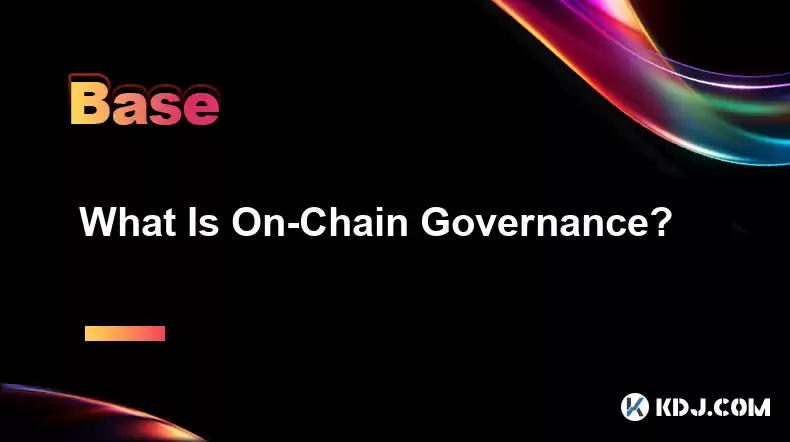-
 Bitcoin
Bitcoin $115000
0.12% -
 Ethereum
Ethereum $3701
4.50% -
 XRP
XRP $3.081
2.99% -
 Tether USDt
Tether USDt $0.0000
-0.01% -
 BNB
BNB $767.9
1.45% -
 Solana
Solana $169.5
3.13% -
 USDC
USDC $0.9999
0.01% -
 Dogecoin
Dogecoin $0.2106
4.30% -
 TRON
TRON $0.3334
1.62% -
 Cardano
Cardano $0.7564
2.54% -
 Stellar
Stellar $0.4165
0.76% -
 Hyperliquid
Hyperliquid $38.75
0.25% -
 Sui
Sui $3.593
3.00% -
 Chainlink
Chainlink $17.08
3.59% -
 Bitcoin Cash
Bitcoin Cash $573.6
4.35% -
 Hedera
Hedera $0.2508
-0.84% -
 Avalanche
Avalanche $23.07
6.46% -
 Ethena USDe
Ethena USDe $1.001
-0.02% -
 Litecoin
Litecoin $120.8
8.17% -
 UNUS SED LEO
UNUS SED LEO $8.943
-0.32% -
 Toncoin
Toncoin $3.400
-5.60% -
 Shiba Inu
Shiba Inu $0.00001255
1.54% -
 Uniswap
Uniswap $9.908
6.32% -
 Polkadot
Polkadot $3.718
2.10% -
 Monero
Monero $303.0
-0.74% -
 Dai
Dai $0.9999
-0.02% -
 Bitget Token
Bitget Token $4.392
0.91% -
 Cronos
Cronos $0.1403
6.31% -
 Pepe
Pepe $0.00001076
1.13% -
 Aave
Aave $267.2
1.80%
What Is On-Chain Governance?
On-chain governance empowers stakeholders to directly participate in decision-making within decentralized networks, ensuring transparency, accountability, and community involvement.
Dec 17, 2024 at 02:35 am

Key Points:
- Definition and Overview of On-Chain Governance: On-chain governance allows stakeholders to directly participate in decision-making processes within a decentralized network, ensuring transparency, accountability, and community involvement. Decisions are tracked and recorded on-chain, providing a verifiable, immutable record.
Types of On-Chain Governance:
- DAO Governance: Decentralized Autonomous Organizations (DAOs) are blockchain-based entities with predefined rules governing decision-making. Members typically hold governance tokens, granting them voting rights and influence over proposal approval.
- Protocol Governance: Changes to protocols themselves are voted on by stakeholders, enabling the community to influence the technical development and direction of the network.
- Parameter Governance: Participants can adjust protocol parameters, such as block sizes, transaction fees, or reward mechanisms, without modifying the core code.
Understanding On-Chain Governance
- Decentralized Decision-Making:
On-chain governance eliminates intermediaries and empowers community members to make decisions collectively. This decentralization fosters transparency and aligns incentives for stakeholders to actively participate in shaping the network's future. - Proposal and Voting Process:
Governance proposals are typically submitted by community members and reviewed by a designated body or committee. Staked tokens or other voting mechanisms are commonly used to allocate voting power. Votes are tallied, and decisions are implemented if a predefined threshold of consensus is reached. - Transparency and Verifiability:
All proposal discussions, votes, and outcomes are recorded on the blockchain. This public record provides transparency into decision-making and ensures accountability. Stakeholders can verify the process and results independently, reducing the risk of manipulation or bias. - Community Involvement:
On-chain governance encourages active participation from all stakeholders, allowing them to influence decisions affecting the network's development and operation. This community-driven approach fosters a sense of ownership and responsibility among members. - Adaptability and Evolution:
On-chain governance enables protocols to adapt and evolve through ongoing stakeholder involvement. Changes to governance mechanisms themselves can be proposed and voted on, facilitating continuous improvement and innovation.
FAQs
1. What are the benefits of on-chain governance?
- Increased transparency, accountability, and security
- Direct community involvement and decision-making power
- Adaptability and flexibility in protocol development
2. How does on-chain governance differ from off-chain governance?
- On-chain governance occurs entirely on the blockchain, ensuring immutability and verifiability, while off-chain governance relies on external platforms or centralized entities, making it more susceptible to manipulation and censorship.
3. What are the challenges associated with on-chain governance?
- Decision-making can be slow and complex due to consensus requirements
- Difficulty in ensuring adequate participation and representation
- Risk of governance token manipulation or centralization
4. What are some examples of successful on-chain governance implementations?
- Uniswap: Decentralized exchange governed by UNI token holders, who vote on protocol changes.
- Compound: Lending protocol enables COMP token holders to influence interest rates and risk parameters through parameter governance.
- MakerDAO: Stablecoin protocol where MKR token holders collectively manage the system's parameters, collateral assets, and risk mitigation strategies.
5. What is the potential future of on-chain governance?
- Continued adoption in decentralized networks and projects
- Integration of advanced democratic mechanisms such as liquid democracy or weighted voting
- Development of tools and frameworks to enhance the efficiency and effectiveness of governance processes
Disclaimer:info@kdj.com
The information provided is not trading advice. kdj.com does not assume any responsibility for any investments made based on the information provided in this article. Cryptocurrencies are highly volatile and it is highly recommended that you invest with caution after thorough research!
If you believe that the content used on this website infringes your copyright, please contact us immediately (info@kdj.com) and we will delete it promptly.
- Velo Universe, DEX, and DeFi Security: Navigating the Future of Decentralized Trading
- 2025-08-05 09:25:13
- Bitget Wallet Revolutionizes Solana with Gas-Free Transactions: A New Era for DeFi
- 2025-08-05 09:25:13
- Ozak AI, Crypto Boom, and ROI Potential: Is This the Next Big Thing?
- 2025-08-05 09:25:24
- Solana's ETF Hopes & the All-Time High Chase: Is SOL Set to Soar?
- 2025-08-05 09:25:24
- Coinbase's Brian Armstrong and the Art of Focused Work: A Deep Dive
- 2025-08-05 09:25:30
- Uniswap Price Prediction: Bullish Reversal on the Horizon?
- 2025-08-05 09:25:30
Related knowledge

What is the difference between CeFi and DeFi?
Jul 22,2025 at 12:28am
Understanding CeFi and DeFiIn the world of cryptocurrency, CeFi (Centralized Finance) and DeFi (Decentralized Finance) represent two distinct financia...

How to qualify for potential crypto airdrops?
Jul 23,2025 at 06:49am
Understanding What Crypto Airdrops AreCrypto airdrops refer to the distribution of free tokens or coins to a large number of wallet addresses, often u...

What is a crypto "airdrop farmer"?
Jul 24,2025 at 10:22pm
Understanding the Role of a Crypto 'Airdrop Farmer'A crypto 'airdrop farmer' refers to an individual who actively participates in cryptocurrency airdr...

What is the difference between a sidechain and a Layer 2?
Jul 20,2025 at 11:35pm
Understanding the Concept of SidechainsA sidechain is a separate blockchain that runs parallel to the main blockchain, typically the mainnet of a cryp...

What is the Inter-Blockchain Communication Protocol (IBC)?
Jul 19,2025 at 10:43am
Understanding the Inter-Blockchain Communication Protocol (IBC)The Inter-Blockchain Communication Protocol (IBC) is a cross-chain communication protoc...

How does sharding improve scalability?
Jul 20,2025 at 01:21am
Understanding Sharding in BlockchainSharding is a database partitioning technique that is increasingly being adopted in blockchain technology to enhan...

What is the difference between CeFi and DeFi?
Jul 22,2025 at 12:28am
Understanding CeFi and DeFiIn the world of cryptocurrency, CeFi (Centralized Finance) and DeFi (Decentralized Finance) represent two distinct financia...

How to qualify for potential crypto airdrops?
Jul 23,2025 at 06:49am
Understanding What Crypto Airdrops AreCrypto airdrops refer to the distribution of free tokens or coins to a large number of wallet addresses, often u...

What is a crypto "airdrop farmer"?
Jul 24,2025 at 10:22pm
Understanding the Role of a Crypto 'Airdrop Farmer'A crypto 'airdrop farmer' refers to an individual who actively participates in cryptocurrency airdr...

What is the difference between a sidechain and a Layer 2?
Jul 20,2025 at 11:35pm
Understanding the Concept of SidechainsA sidechain is a separate blockchain that runs parallel to the main blockchain, typically the mainnet of a cryp...

What is the Inter-Blockchain Communication Protocol (IBC)?
Jul 19,2025 at 10:43am
Understanding the Inter-Blockchain Communication Protocol (IBC)The Inter-Blockchain Communication Protocol (IBC) is a cross-chain communication protoc...

How does sharding improve scalability?
Jul 20,2025 at 01:21am
Understanding Sharding in BlockchainSharding is a database partitioning technique that is increasingly being adopted in blockchain technology to enhan...
See all articles

























































































